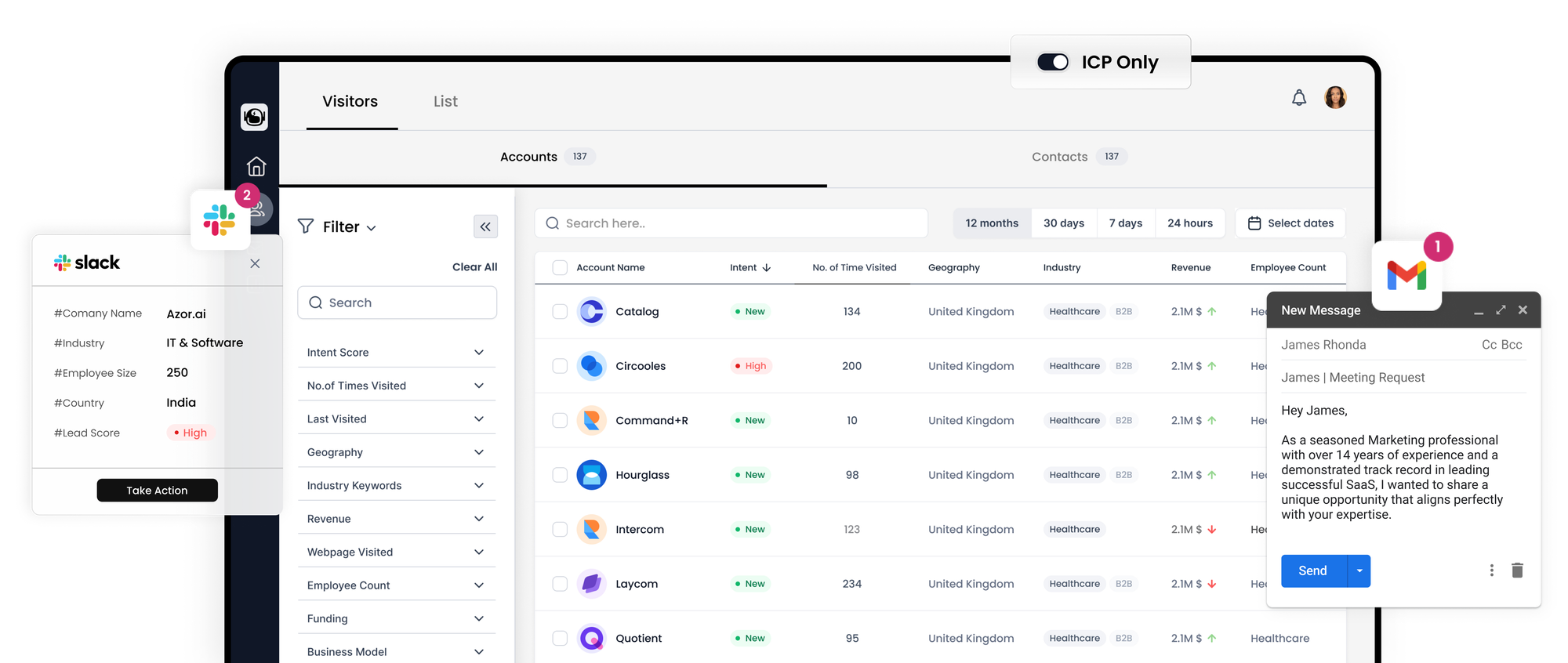The Evolution of B2B Marketing Automation: A Comprehensive Guide

In the rapidly evolving landscape of B2B marketing, traditional marketing automation platforms (MAPs) that once promised to automate the entire marketing process have given way to a new era of specialized tech providers. This shift has seen the rise of smaller tech "stacks" consisting of various specialized tools rather than relying on one all-encompassing platform.
This transformation has not only impacted the technology but also reshaped the roles of marketing operations professionals, such as Sales Ops and Rev Ops experts. They are no longer required to be singularly proficient in one MAP but instead need to become generalists skilled in various technologies and adept at evaluating integrations for different software within the stack.
If you find yourself unsure about how your current automation platforms fit into this new paradigm, you're not alone. To help you navigate this changing landscape, we have prepared this comprehensive guide to B2B marketing automation, leveraging the latest trends and technology.

What is Marketing Automation?
Marketing automation is the strategic use of technology to streamline and enhance marketing efforts. Its primary aim is to automate repetitive tasks, including email marketing, advertising campaigns, social media posting, and more. However, the goal isn't merely efficiency; it's also about delivering a personalized and tailored experience to your customers.
A Brief History of Marketing Automation
The origins of marketing automation can be traced back to Unica, one of the earliest platforms in the field. However, its capabilities were limited, and it was predominantly used by financial institutions. The real turning point came in 1999 when Eloqua emerged as a pioneer in marketing automation.
Eloqua revolutionized the landscape by addressing marketing needs like lead generation, web analytics, automated email campaigns, and much more. This breakthrough paved the way for other major players such as Hubspot, Pardot, and Marketo to enter the market.
Marketing Automation in the Modern Era
While marketing automation platforms once served as the central hub of marketing technology, the landscape has shifted. Many marketing efforts now focus on extracting processes from MAPs because third-party tools excel in their specialized areas.
Intriguingly, some experts even argue that marketing automation as we knew it is fading away. This change is driven by the fact that marketing itself has undergone a profound transformation. Today's buyers are quick to change their preferences, even after making a purchase, and the market is fiercely competitive.
To keep up, marketing technology has become increasingly sophisticated, optimizing every step of the buyer's journey. Specialized solutions have emerged, leading to the creation of new, larger categories in the marketing technology landscape.
Examples of Marketing Automation
Digital marketing automation encompasses a wide range of tasks aimed at enhancing the customer experience. Here are several B2B marketing automation examples:
1. Welcome Emails
Automatically sending welcome emails when customers create an account.
2. Reminder Emails
Sending reminders for abandoned carts, upcoming sales, and holidays.
3. Lead Routing
Efficiently routing leads to the appropriate sales teams or representatives.
4. Chatbots
Using chatbots to engage with website visitors and answer inquiries.
5. Pipeline Management
Streamlining the management of sales pipelines and workflows.
6. Automated Ad Campaigns
Running automated advertising campaigns across various platforms.
7. Tracking Interactions
Monitoring customer interactions with your website and content.
8. Feedback Requests
Automatically soliciting feedback from customers for continuous improvement.
9. Automated Booking and Scheduling
Enabling customers to book appointments or schedule services seamlessly.
10. Social Media Monitoring
Tools to track and manage social media posts and engagement.
11. Customized Web Pages
Creating personalized web pages based on viewer demographics and behavior.
How Does Marketing Automation Work?
Marketing automation operates by gathering data and analyzing customer behavior, then utilizing that information to trigger automated processes.
In the digital realm, every online activity, from website visits to social media engagement, leaves behind a digital footprint. These footprints provide insights into where customers have been, their buying behavior, interests, geographical location, and more.
Marketing automation harnesses this wealth of information to respond appropriately, delivering a tailored experience to customers. This process is crucial, as research indicates that 90% of U.S. consumers respond positively to a customized experience.
For instance, if a customer's computer has an IP address from a specific state, your website can dynamically display information relevant to that location, creating a personalized and engaging interaction.
Unlocking the Power of Marketing Automation: Benefits and Common Pitfalls
Marketing automation is a game-changer for marketers, offering a plethora of benefits to enhance their strategies. Let's delve into five key advantages and also explore why it sometimes falls short.
Benefits of Marketing Automation
1. Time Savings and Improved Conversions
Timeliness is critical in sales, and marketing automation can significantly impact response times. Research shows that over 78% of customers tend to buy from the first company that responds promptly. By automating customer responses, you not only optimize efficiency but also reduce lead response times. This immediate engagement can lead to a substantial increase in ROI.
A real-world example is Apollo's remarkable 300% revenue boost through the utilization of Chili Piper.
2. Efficiency Enhancement via Streamlined Processes
Think about what you could achieve with an extra hour in your day, let alone five. Marketing automation streamlines processes and resources, ensuring your marketing strategies operate at peak efficiency.
Consider large e-commerce brands and their email marketing. Automating emails for tasks such as abandoned carts, birthday greetings, product recommendations, and promotions is essential. Without automation, managing such tasks at scale would be nearly impossible. Studies indicate that businesses using marketing automation are 20% more productive.
3. Reduction of Costly Human Errors
Human errors, while inevitable, can have substantial financial consequences. For instance, in 2017, an Amazon employee's typo inadvertently shut down multiple servers, resulting in significant financial losses.
Marketing errors may not lead to such catastrophic outcomes, but they can still result in lost leads or damage a company's reputation. Marketing automation significantly diminishes the chances of errors, ensuring consistent information across platforms. A study found that 66% of companies reported that automation helped reduce data errors.
4. Increased Customer Capacity
Marketing automation empowers you to handle a larger volume of customers efficiently. Although long sales nurturing cycles may not be the focus, automation excels in tasks like win-back programs, onboarding flows, review requests, and more.
Imagine having to manage all these tasks manually for each customer—it's neither practical nor necessary.
5. Elimination of Tedious and Repetitive Tasks
On average, marketers and sales representatives spend 17% of their workday on data entry, equating to nearly two hours. Just imagine the productivity gains if these hours were redirected towards more strategic endeavors.
Automation is ideal for handling repetitive tasks, as they require specific instructions rather than creativity or complex decision-making. Your Marketing Automation Platform (MAP) can efficiently handle these tasks once you set the parameters.
Common Pitfalls in Marketing Automation
1. Incorrect Software Setup
Properly configuring a marketing automation platform requires meticulous attention to detail. A single mistake can prove costly and challenging to detect. To avoid errors, consider hiring an expert to integrate the software into your existing marketing processes.
2. Scalability Challenges
Not all marketing automation platforms are equipped to handle more sophisticated tasks. Some may limit your capabilities as your organization grows. Inflexible systems can hinder automation efforts and lead to redundant steps, wasting valuable time.
3. Misalignment with Objectives
One of the most significant mistakes in marketing automation is failing to align key performance indicators with overarching business objectives. Metrics that don't directly correlate with revenue can be misleading. Focusing on revenue generation aligns marketing efforts with executive leadership and revenue teams.
4. Timing and Targeting Issues
Sending the wrong message to the wrong person at the wrong time can be counterproductive. Setting up marketing automation correctly, taking into account customer lifecycle stages, and understanding customer needs are essential to avoid this pitfall.
5. Advanced Automation Limitations
Some marketing automation platforms may feel restrictive when attempting to create non-standard automation for specific objectives. The ability to tailor engagement based on past interactions is crucial, yet not all platforms offer the necessary flexibility. Marketers require tools that allow precise control over actions and timing.
In conclusion, while marketing automation offers numerous advantages, it is not without its challenges. By following best practices and addressing common pitfalls, businesses can harness the full potential of marketing automation to drive growth and efficiency in their marketing efforts.
Is Marketing Automation Right for Your Business? A Comprehensive Evaluation
Determining whether your business should leverage marketing automation platforms (MAPs) is a critical decision, and there's no one-size-fits-all answer. Let's explore the factors to consider when making this determination.
The Complexity of MAP "Suites"
- Opting for a MAP "suite" might seem like the simplest choice. However, these suites can sometimes feel like a collection of disparate systems cobbled together and marketed under a single brand. While this approach may work well in the short term, particularly for quickly launching a project, it may not be the most fruitful long-term strategy.
- Such suites are most effective for companies running small campaigns or targeting a limited audience. These scenarios can often be managed with one or a couple of applications (e.g., Content Management System or Customer Relationship Management), complemented by a few integrations.
The Need for Flexibility
- As your digital requirements expand, the importance of a comprehensive and flexible solution becomes evident. In a rapidly evolving technological landscape, adaptability is a valuable asset. A stack of smaller, highly-specialized solutions can offer the flexibility needed to keep up with the pace of change.
- In this approach, no single primary service shoulders the entire burden. Instead, each service focuses on a specific task and manages the end-to-end customer journey for that task. Afterward, it seamlessly hands over the process to another microservice, ensuring a cohesive experience.
- The "pluggable" nature of these individual components provides the freedom to replace them easily, eliminating the need to adhere to outdated legacy applications or platforms.
Resource Considerations
- Managing all the components within your MarTech stack can be both time-consuming and intimidating. It may require more resources than your organization can allocate. Additionally, it might necessitate specialized training or expertise to effectively work with various systems.
- Identifying stack services that integrate seamlessly and rolling out your project within this framework can also be more time-consuming than the MAP approach.
Ultimately, the decision should align with your business's specific requirements. If your needs are well-defined and you have the resources and expertise to manage a diverse MarTech stack, it can be a viable and flexible option. However, if simplicity, speed, and immediate campaign management are your top priorities, a MAP "suite" may suffice for your current objectives.
